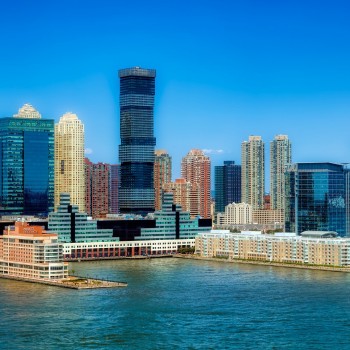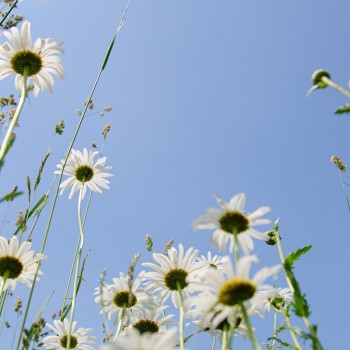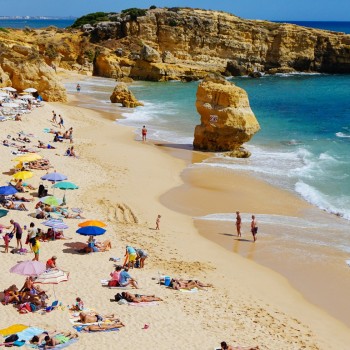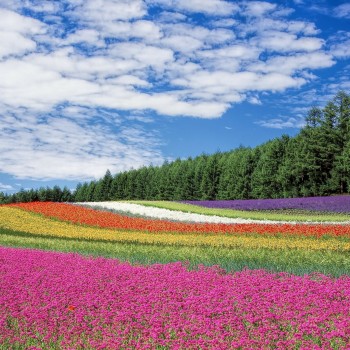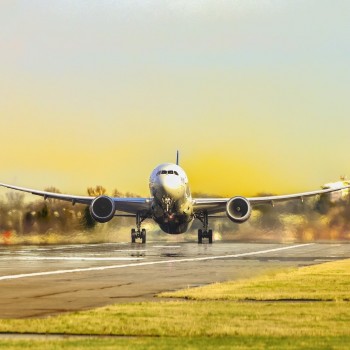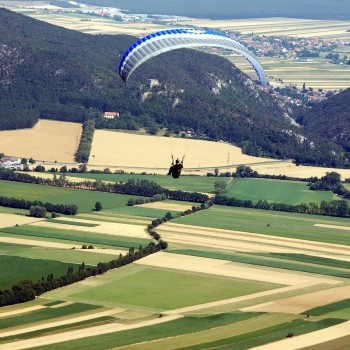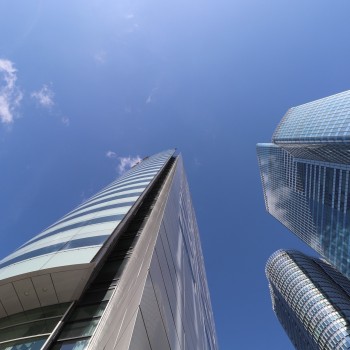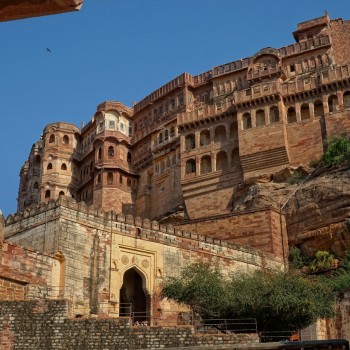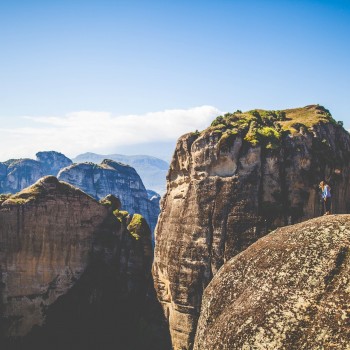Cuba
Cuba
Capital city description
The city is located on La Habana (Havana) Bay on the island’s north coast. It is the largest city in the Caribbean region and has one of the outstanding treasuries of historic colonial preserves in the Western Hemisphere.
Havana’s location along a magnificent deep-sea bay with a sheltered harbor made the city a prime location for economic development from Spanish colonial times in the early 16th century. Cuba is endowed with some such ports, but Havana’s on the north coast was prized above the others by the early Spanish colonizers. With land on both sides of the harbor, the port was easily defended.
Climate
The climate in Cuba is sub-tropical, with calm trade winds providing some relief from the heat and humidity. The average year-round temperature is approximately 26°C, and there's plenty of sunshine.
Languages spoken
Spanish is the main language of Cuba.
Fun/Fascinating Facts
- The main island of Cuba is just over 40 thousand square miles, making it approximately half the size of Great Britain. It ranks as the 17th largest island in the world. Aside from Cuba’s main island, its area further has 400 islands, islets, and keys part of Cuban territory. Some have become popular resort destinations due to their pristine beaches, such as Cayo Coco, Cayo Largo, and Cayo Santa Maria
- Cuba’s long coastline is home to around 200 bays and 250 beaches. Having a long thin shape means that wherever you are in the country, you are never far from the sea. Many of the beaches are consistently ranked as being among the global best. With such a large amount of coastline combined with a warm Caribbean climate, it is a small wonder why Cuba has become a popular holiday destination.
- The top tobacco product is the Cuban cigar, famous worldwide as the gold standard of cigars and consequently a vital export. Sugar is exported in its raw form and also in the form of various rums that are made on the island. As for nickel, it is thought that Cuba still has reserves of over five million metric tons. This places the country fifth in the world. The majority of the nickel is used abroad to make stainless steel and other alloys.
- Old Havana is probably the most famous UNESCO Heritage Site in Cuba, but there are eight others to explore, of which 2 are natural sites. Trinidad, Viñales, and Cienfuegos are other popular UNESCO World Heritage Sites here.
Unique Customs/Traditions
- Christmas is a pretty big deal, but in Cuba, it’s Christmas Eve that gets all the attention. Families get together, and the neighbors join in -they might even invite some co-workers. As it’s known in Cuba, Noche Buena involves a glorious traditional meal featuring a whole suckling pig, fried plantains, rice, and vegetables.
- If you attend a wedding in Cuba, you might notice all the male guests who dance with the bride reaching for their pockets and grabbing their wallets. It’s a tradition to pin money on the bride’s dress as she dances. This helpful tradition is meant to help the newlyweds cover the cost of their honeymoon.
- If you are in Cuba, you attend a wedding, and you might notice all the male guests who dance with the bride reaching for their pockets and grabbing their wallets. It’s a tradition to pin money on the bride’s dress as she dances. This helpful tradition is meant to help the newlyweds cover the cost of their honeymoon.
- While some Cubans prefer to stick to traditional names, many others make up their unique names for their children. They are sometimes cobbled together from pieces of relatives’ names, or they might be entirely made up.
Popular universities
| Name | Description | |
|---|---|---|
| Universidad de La Habana | The University of Havana was founded in 1728. This university is a non-profit public higher education institution located in the urban setting of the metropolis of Havana. It is officially recognized by the Ministry of Higher Education of Cuba. UH is a large co-educational Cuban higher education institution. The University of Havana(UH) offers courses and programs leading to officially recognized higher education degrees in several areas of study. UH also provides academic and non-academic facilities and services to students, including a library, housing, sports facilities, study abroad and exchange programs, online courses, distance learning opportunities, and administrative services. International students are welcome to apply for enrollment. | |
| University of Information Sciences | The University of Information Sciences was Founded in 2002. The University of Information Sciences is a non-profit public higher education institution located in the metropolis of Havana. The University of Information Sciences(UCI) offers courses and programs leading to officially recognized higher education degrees in several areas of study. Formally recognized by the Ministry of Higher Education of Cuba), UCI is a small co-educational Cuban higher education institution. UCI also provides academic and non-academic facilities and services to students, including a library and administrative services. | |
| The Marta Abreu University of Las Villas | The Marta Abreu University of Las Villas was founded in 1952. The Marta Abreu University of Las Villas is a non-profit public higher education institution located in the medium city of Santa Clara Villa. Officially recognized by the Ministry of Higher Education of Cuba, UCLV is a large (uni-rank enrollment range: 10,000-14,999 students) co-educational Cuban higher education institution. Universidad Central Marta Abreu de Las Villas (UCLV) offers courses and programs leading to officially recognized higher education degrees in several areas of study. UCLV also provides academic and non-academic facilities and services to students, including a library, housing, sports facilities, online courses, distance learning opportunities, and administrative services. | |
| Jose Martí Pérez University of Sancti Spiritus | José Martí Pérez University of Sancti Spiritus Founded in 1976. The José Martí Pérez University of Sancti Spiritus is a non-profit public higher education institution located in the small city of Sancti Spiritus. Officially recognized by the Ministry of Higher Education of Cuba. UNISS is a small co-educational Cuban higher education institution. UNISS offers courses and programs leading to officially recognized higher education degrees in several areas of study. UNISS also provides several academic and non-academic facilities and services to students, including a library, online courses, distance learning opportunities, and administrative services. | |
| University of Holguín | The University of Holguín was established in 1973. The University of Holguín is a non-profit public higher education institution located in the metropolis of Holguin. The University is recognized by the Ministry of Higher Education of Cuba. The University of Holguín is a small co-educational Cuban higher education institution. The University of Holguín offers courses and programs leading to officially recognized higher education degrees, such as bachelor's degrees in several areas of study. The University of Holguín also provides students with academic and non-academic facilities and services, including a library, online courses, distance learning opportunities, and administrative services. | |
| University of Granma | The University of Granma was founded in 1976. The University of Granma is a non-profit public higher education institution located in the large city of Bayamo Granma. Officially recognized by the Ministry of Higher Education of Cuba, UDG is a medium-sized co-educational Cuban higher education institution. UDG offers courses and programs leading to officially recognized higher education degrees, such as bachelor's degrees in several areas of study. UDG also provides several academic and non-academic facilities and services to students, including a library, online courses, distance learning opportunities, and administrative services. | |
Festivals & Events

Festival de la Trova Longina
Date: January
Festival de la Trova Longina a music festival held in Santa Clara. Trova is a style of music that was very famous in Cuba, and there are many very well-known Cuban songs written in this style that are known around the world and still very much loved and remembered today.
It is named after a well-known trova song composed in 1918 by famous Cuban musician Manuel Corona.

Havana Jazz Festival
Date: January
Havana Jazz Festival is an internationally famous event that draws an excellent line-up of local and international jazz musicians. Cuba has its favorite jazz genre.
The Cuban Government's importance on music and the Cuban society means an almost endless supply of new and exciting local talent on offer. Performances occur in the Casa de la Culture Plaza, Teatro Nacional de Cuba, and other venues.

May Day
Date: 1st May
May Day is celebrated in Cuba with workers marching with their colleagues to the Revolution Square, where special cultural and musical events and speeches from leading figures are held.
The largest gathering in Cuba is in Havana. More than a million workers parade along the streets every year until they reach the Plaza de la Revolucion at the foot of the giant statue of Cuba's godfather of the Revolution, Jose Marti.

CDR anniversary
Date: September
The CDR anniversary is one of the most festive CDR meetings. It can be an excellent opportunity for visitors to Cuba to meet and interact with everyday Cubans, especially if you are staying in a local guesthouse. It plays out more like a veritable street party. A Valdosta stew is cooked in a big pot over a wood fire on the street, and the children play games.

Marabana Marathon
Date: November
Marabana Marathon is an annual sporting event held in November, attracting thousands of walkers and runners, including locals and international athletes from nearly 30 countries. Participation is offered for distances of full-marathon (2 laps), half-marathon, 5km, and 10km.
The marathon route goes through some of the more scenic areas of Old Havana, Central Havana, and Vedado. Prizes are awarded in male, female, and handicapped categories.
Attractions / Top Sights

Habana Vieja or Old Havana
When to visit: November to March
Habana Vieja or Old Havana is a unique city home to some of the best-preserved history in Cuba. It boasts much Baroque and neoclassical architecture like the Cuban Baroque Catedral de San Cristobal and historic sites like the Bodeguita del Medio. Additionally, Castillo de la Real Fuerza, a military fortress, or the Plaza Vieja are other tourist highlights in the city.
A UNESCO World Heritage site, Habana Vieja or Old Havana, is a best-preserved slice of Cuban history. This historical town square serves as an excellent spot to enjoy a mojito in the sun.

Baracoa
When to visit: In spring
Founded in 1511, Baracoa is one of the most famous oldest cities in the country, home to many remote black-sand beaches, peaceful streams, crashing waterfalls to explore and bathe in, and lush forests to hike through.
It houses an exhilarating mountain, El Yunque mountain, famous for its flat top at 589 meters high that offers incredible sea views. The hillside is a UNESCO Biosphere Reserve where rare birds and plants thrive.

Varadero
When to visit: Between July and September
Varadero is one of Cuba's most renowned beaches destinations and home to one of the best beaches in the Caribbean. Also known as Playa Azul (Blue Beach), Varadero is a resort town in Matanzas, Cuba, one of the largest resort areas in the Caribbean.
It stretches along the Peninsula de Hicacos, which juts into the sea off the north coast; a drawbridge connects it to the mainland.

Trinidad
When to visit: January, February, March and December
A UNESCO World Heritage Site, Trinidad, Cuba, is stunningly well-preserved buildings, and cobblestone streets exude a quaint colonial feel. It houses several impressive numbers of picturesque Spanish-colonial buildings.
Trinidad is one of Cuba's most famous and pleasing cities, apart from Havana. You can soak up its lively ambiance in the cobblestone Plaza Mayor, the city's central square. Above the square stands the neoclassical Church of the Holy Trinity (Iglesia Parroquial de la Santisima Trinidad).

Guardalavaca
When to visit: Between June to September
Guardalavaca is one of the famous tourist spots in Cuba due to its white sandy beaches and warm waters. It is situated on the northern shore of Cuba, bordering Bahia de Naranjo (Orange Bay), and is part of the municipality of Banes.
The stunning beach is protected by a large coral reef and is one of the most visited by local Cubans and tourists. Divers and snorkelers can explore a plethora of sea life along the coral reefs.

Playa Paraíso
When to visit: Between June to September
Playa Paraíso, or Paradise Beach, is a lovely Cuban beach and one of the best Cuban beaches in Cayo Largo del Sur. The strip of beach has soft, white sand, shockingly blue water, and a dry, sunny climate perfect for perfect beach lounging.
Playa Paraíso is the main attraction on the island of Cayo Largo del Sur, connected to another fine beach – Playa Sirena. Both of these beaches are part of a nature preserve, and thus they are maintained in a very natural state.

Parque Nacional Viñales
When to visit: April to October
The Parque Nacional Viñales is a stunning, verdant valley in the Sierra de los Organos, north of Pinar del Rio, a UNESCO World Heritage Site. Steep limestone hills, called mogotes, slice through the valleys, creating a dramatic landscape.
The valley floors in the Parque Nacional Viñales are agricultural areas where tobacco, fruit, and vegetables are grown. The park offers fantastic hiking and horseback riding in the hills for outdoor enthusiasts.

Cienfuegos
When to visit: In summer
Cienfuegos is a city with a European style full of exquisite architecture. Called the Paris of Cuba, this city has French influences in its customs and fashion. Stroll around the harbor-side town to find Bahia de Jagua's beautiful bay and the art galleries around the Plaza de Armas. On the coastal drive west to the Bay of Pigs, there are elaborate, colorful mansions throughout the city.

